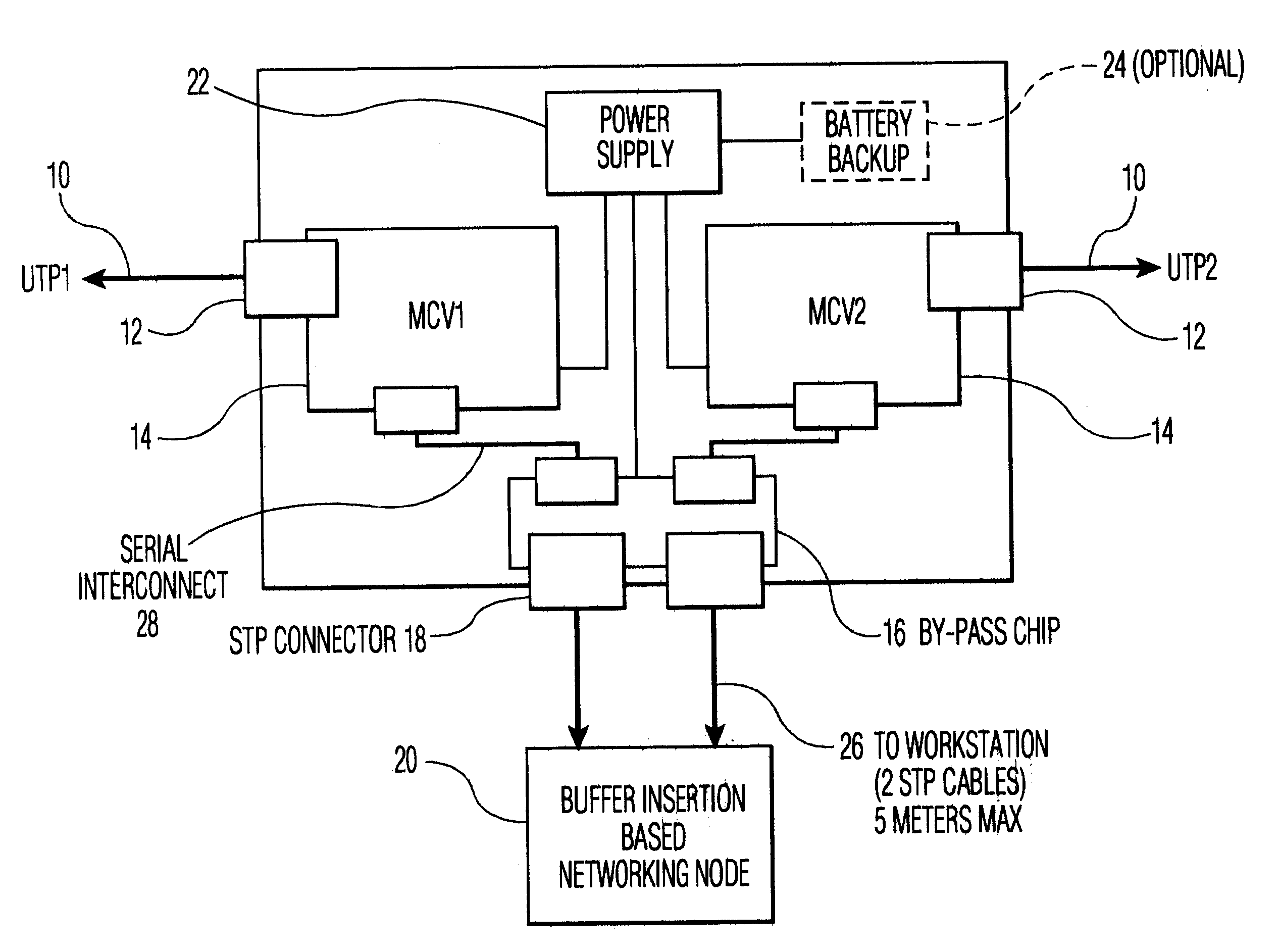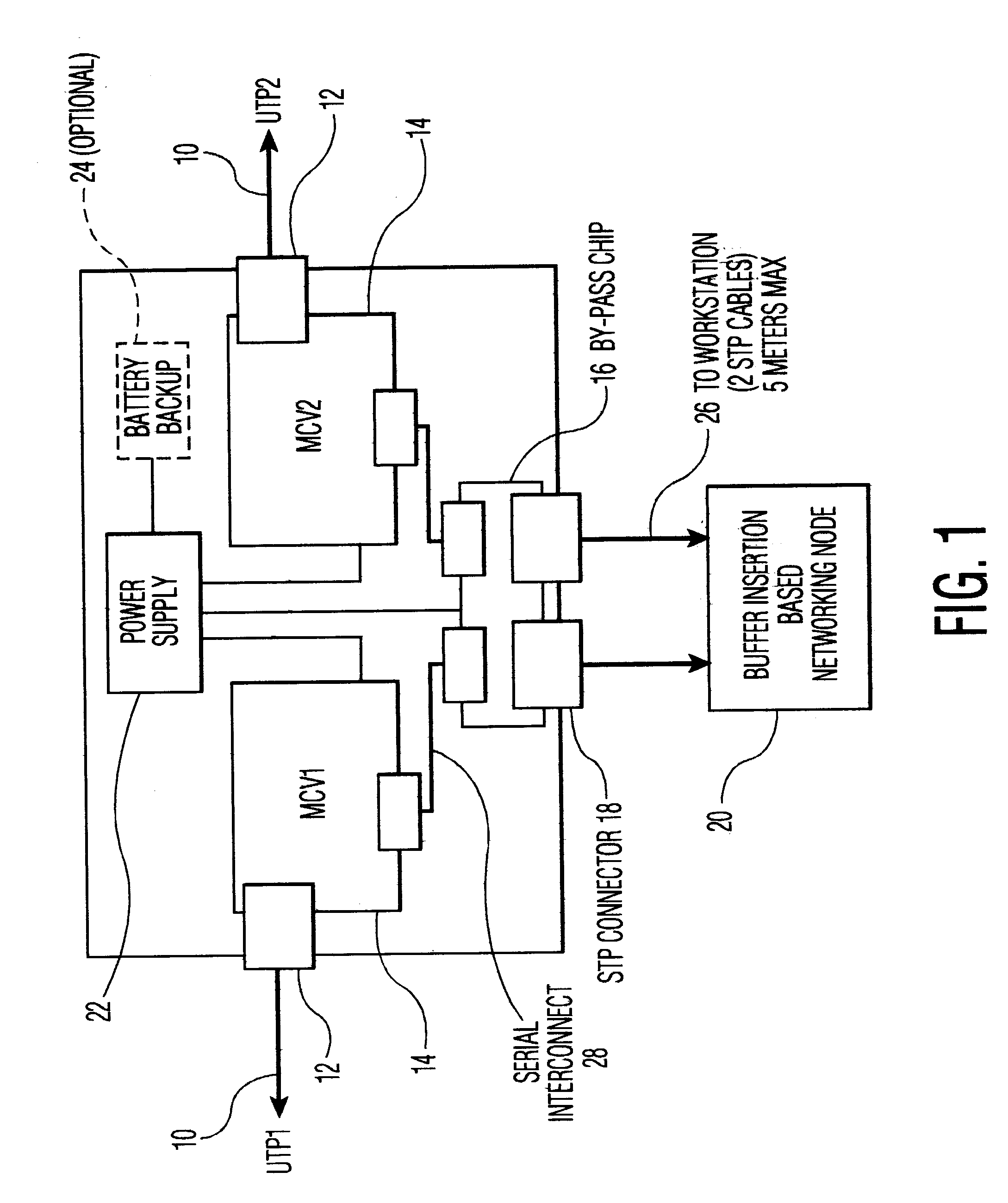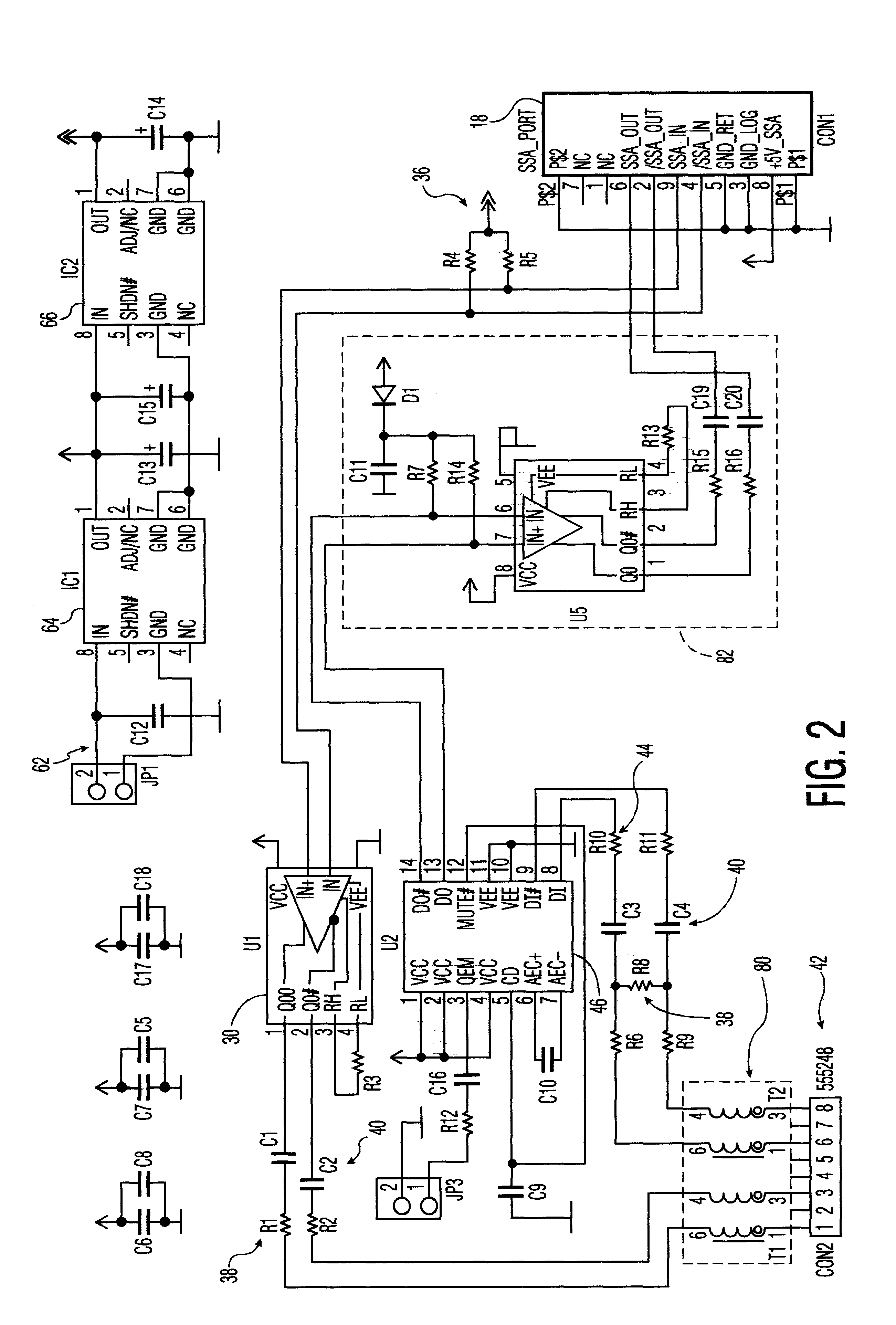Computer and peripheral networking device permitting the practical use of buffer insertion-based networks while communicating over unshielded twisted pair conductive media
- Summary
- Abstract
- Description
- Claims
- Application Information
AI Technical Summary
Benefits of technology
Problems solved by technology
Method used
Image
Examples
Embodiment Construction
FIG. 1--Block Diagrams of the Bypass Configuration
FIG. 1 is a block diagram of the bypass configuration, connected to a standard Buffer Insertion-based node, and to UTP or suitable higher-quality STP cabling. Because of the aforementioned switch limitation with the standard implementation of Buffer Insertion-based network node devices, a plurality of Buffer Insertion network nodes will be connected in the form of a string or switchless loop. A Bypass device using the Buffer Insertion approach will be connected each node and to matching media conversion devices so that if a buffer insertion based node within the string is out of service, there is a pass-through ignoring the down node. Otherwise, nodes beyond the down node will be isolated and non-operational from the switches and / or severs seeking to send them data (the old-fashioned, serial Christmas tree light problem.)
As has been stated, the ANSI-standard compliant Buffer Insertion approach requires the use of simple Shielded Twis...
PUM
 Login to View More
Login to View More Abstract
Description
Claims
Application Information
 Login to View More
Login to View More - R&D
- Intellectual Property
- Life Sciences
- Materials
- Tech Scout
- Unparalleled Data Quality
- Higher Quality Content
- 60% Fewer Hallucinations
Browse by: Latest US Patents, China's latest patents, Technical Efficacy Thesaurus, Application Domain, Technology Topic, Popular Technical Reports.
© 2025 PatSnap. All rights reserved.Legal|Privacy policy|Modern Slavery Act Transparency Statement|Sitemap|About US| Contact US: help@patsnap.com



